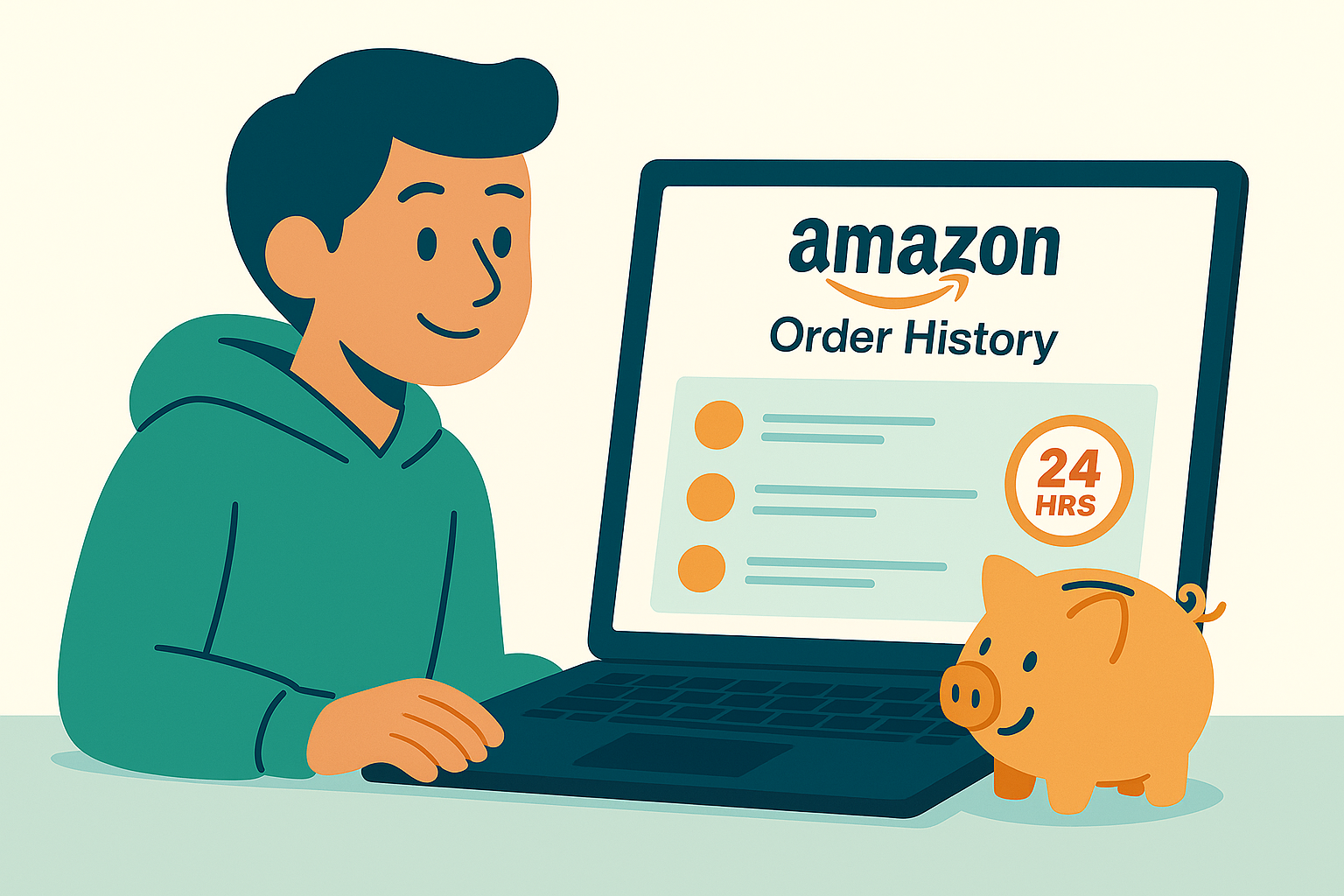Impulse Buy Armor: Fin’s 24-Hour Rule

We’ve all been there. It’s late at night, you’re scrolling Amazon, Target, or that random ad Instagram shoved in your face, and suddenly you’ve convinced yourself that you need a $60 gadget you’ve never thought about before. For me, it was a countertop mini donut maker. (Spoiler: I don’t even bake.)
After a few too many of those “why did I buy this?” moments, I looked back through my Amazon order history from the past year. That was a wake-up call.
Some of the items were useful—things I use daily without regret. But plenty of them? Either stuffed in a drawer, collecting dust, or already donated. I realized that maybe half of my “great deals” weren’t really deals at all—they were little budget leaks disguised as treats.
🚦 Step One: Stop at the Red Light
Whenever I feel that itch to buy, I don’t hit checkout. Instead, I add it to my cart or wishlist. That’s it. It’s like hitting the brakes.
⏳ Step Two: The 24-Hour Wait
I set a reminder for tomorrow. The deal will (probably) still be there, and if it isn’t… well, that usually tells me it wasn’t worth it in the first place.
The funny thing? By the next day, half the time I don’t even want the thing anymore. The donut maker? Yeah, that stayed in my cart until Amazon just gave up on me.
💡 Step Three: The Second Look
If I still want it after a day, I ask myself two questions:
- Do I actually need this?
- Is there a cheaper alternative (or something I already own) that does the same job?
And now, I also ask myself: what would this look like if I saw it on next year’s order history? Would it be in the “used and loved” category—or the “forgotten junk” pile?
That little mental trick adds extra weight to the decision.
🐷 Why This Works
Impulse buys are like little leaks in your budget—individually small, but over time they sink the ship. By giving yourself space, you make fewer emotional decisions and more intentional ones.
When I added up all the “forgotten items” from my past orders, the total was shocking. Hundreds of dollars gone—money that could’ve gone into savings, an index fund, or even just a rainy-day cushion. My piggy bank mascot loves this trick because it means more coins end up with him, instead of in the hands of late-night marketers.
Fin’s Takeaway
I’m not saying “never treat yourself.” But I am saying: pause. That 24-hour buffer—and the little experiment of reviewing your old orders—might be the simplest money-saving tools you’ve never tried.
And hey—if you really want the donut maker after a day, and you picture yourself still using it a year later? Go for it. At least you’ll know it’s not just 2 AM brain talking.